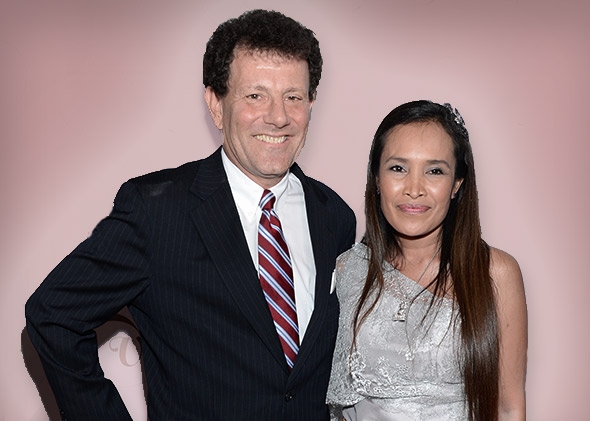Understanding how audiences perceive and engage with news media is crucial for assessing the potency of journalistic reporting and selling media literacy in today’s digital camera landscape. The Christian Scientific disciplines Monitor (CSM), renowned due to the in-depth analysis, balanced report generation, and commitment to objectivity, serves as a valuable case study regarding investigating audience perception and also media literacy. By studying how readers interpret and also navigate CSM’s reporting, scientists can gain insights to the factors that shape visitors perceptions, attitudes, and manners towards news media.
One aspect of audience perception that worth investigation is readers’ rely upon the credibility and stability of CSM’s reporting. As a publication known for its commitment to journalistic integrity and accuracy, CSM has grown a reputation for offering trustworthy and impartial news coverage. Understanding how readers comprehend and evaluate CSM’s reporting can shed light on the aspects that influence trust in press, such as journalistic standards, periodical transparency, and perceived prejudice. Moreover, exploring readers’ trust in CSM’s reporting can help identify strategies for enhancing transparency, accountability, and credibility in journalistic practice.
Furthermore, investigating just how readers interpret and browse CSM’s reporting can provide experience into their media literacy expertise and critical thinking skills. In today’s digital age, wherever misinformation and fake news grow online, media literacy is vital for enabling readers to help discern fact from fictional, evaluate sources critically, create informed decisions about the information they consume. By analyzing how readers engage with CSM’s reporting, researchers can contrast their ability to identify bias, evaluate evidence, and distinguish between news and opinion, thereby contributing to efforts to promote media literacy and up to engagement.
Moreover, exploring readers’ perceptions of CSM’s coverage can offer valuable insights in their attitudes towards journalism along with the role of news media in society. As a publication that will emphasizes in-depth analysis, careful commentary, and constructive conversation, CSM plays a unique purpose in shaping public task and fostering informed citizenship. Understanding how readers perceive and interact with CSM’s reporting offers insights into their attitudes to journalism’s role in updating, educating, and empowering visitors to participate in democratic processes and also civic life.
Additionally , examining how readers navigate CSM’s reporting can shed light on all their information-seeking behaviors and choices in an increasingly fragmented media landscape. With the proliferation regarding digital platforms and social media channels, readers have access to loads of news sources and information solutions, each with its own content perspective, agenda, and bias. Understanding how readers select, take in, and engage with CSM’s reporting can provide insights into their press consumption habits, preferences, and also motivations, thereby informing techniques for content distribution, audience involvement, and reader retention.
Additionally, exploring how readers interact with CSM’s reporting can offer ideas into their perceptions of the publication’s editorial stance, values, along with mission. As a publication founded on Christian Science rules and values, CSM wishes to provide news coverage which is informed by ethical guidelines, compassion, and a commitment in click to read more order to truth. Understanding how readers comprehend and interpret CSM’s periodical perspective can provide insights in the factors that shape their attitudes towards the publication, which include their religious beliefs, politics affiliations, and cultural experience.
In conclusion, investigating how followers perceive and engage with CSM’s reporting offers valuable ideas into audience perception, press literacy, and the role of reports media in society. By means of examining readers’ trust in CSM’s credibility, their media literacy skills, their attitudes to journalism, and their information-seeking manners, researchers can gain any deeper understanding of the aspects that shape audience awareness of news media and inform efforts to promote media literacy, transparency, and accountability. As the media landscape continues to advance, the role of visitors perception and media literacy in shaping the future of journalism will remain paramount, highlighting the importance of ongoing research and dialogue in this area.
Keeping Excellence: Quality Control as well as Standardization in Essential Oil Production to Ensure Purity, Safety, along with Efficacy in doTERRA Products
Quality control and standardization play pivotal roles inside the essential oil industry, particularly within the manufacturing of formulations by companies similar to doTERRA. With a commitment to providing high-quality, pure, and effective essential oil products, doTERRA emphasizes rigorous quality control measures and adherence in order to industry standards throughout the development process. In this article, we take a look at the importance of quality control and also standardization in essential oil development, focusing on the practices utilised by doTERRA to ensure the purity, protection, and efficacy of the formulations.
Central to quality control in essential oil creation is the sourcing of recycleables from reputable suppliers who adhere to strict quality standards and ethical sourcing techniques. doTERRA works directly along with growers and distillers around the globe to source premium-quality botanicals that are cultivated and harvested using sustainable and good for the environment methods. By partnering together with trusted suppliers and performing thorough quality assessments involving raw materials, doTERRA ensures often the integrity and authenticity associated with its essential oil ingredients, thus laying the foundation for the development of high-quality formulations.
Furthermore, quality control measures usually are implemented at every stage with the production process to monitor and maintain the purity, potency, along with consistency of essential oil products. From extraction and handiwork to blending and bottling, doTERRA employs state-of-the-art technologies and analytical techniques to assess the chemical composition and level of quality of essential oils, making certain they meet stringent top quality standards and regulatory needs. For example , gas chromatography-mass spectrometry (GC-MS) is used to analyze often the chemical composition of essential oils and detect virtually any contaminants or adulterants, when organoleptic testing is used to gauge the aroma, color, and consistency of formulations.
Furthermore, doTERRA places a strong emphasis on standardization and quality reassurance in its manufacturing processes to be sure uniformity and consistency across product batches. Standard operating procedures (SOPs) are founded for each step of the development process, outlining specific practices and criteria for level of quality control and testing. In addition , Good Manufacturing Practices (GMPs) are followed to maintain hygiene, hygiene, and safety that manufactures facilities, minimizing the risk of contamination and ensuring product reliability. By adhering to strict top quality control protocols and expectations, doTERRA ensures that its petrol formulations consistently meet or even exceed customer expectations regarding purity, safety, and efficacy.
In addition to internal quality command measures, doTERRA collaborates having independent third-party laboratories and testing organizations to verify the quality and purity connected with its essential oil products. These laboratories conduct comprehensive examining and analysis of doTERRA formulations to confirm their accuracy, purity, and potency, offering an additional layer of peace of mind to consumers. Moreover, doTERRA publishes the results of thirdparty testing on its web site, providing transparency and accountability to customers and showing its commitment to top quality and integrity.
Furthermore, doTERRA invests in research and advancement to advance the science of essential oils and increase the efficacy and safety connected with its formulations. Through close ties with leading research organizations and experts in the field of essential oil science, doTERRA conducts demanding scientific studies and clinical studies to validate the healing properties and health benefits regarding its products. Moreover, doTERRA collaborates with healthcare experts and practitioners to assimilate essential oil therapy into scientific practice and develop evidence-based protocols for addressing a wide range of health concerns.
In conclusion, quality command and standardization are essential aspects of essential oil production, particularly within ensuring the purity, safety, and efficacy of preparations by companies like doTERRA. By implementing rigorous top quality control measures, adhering to marketplace standards, and collaborating having trusted suppliers and testing organizations, doTERRA maintains virtue in its essential oil products and upholds its commitment to giving customers with pure, potent, and effective formulations. As the demand for natural health and wellness products continues to grow, the importance of quality command and standardization in oil production cannot be overstated, because they are crucial for ensuring client trust, confidence, and satisfaction in the marketplace.




